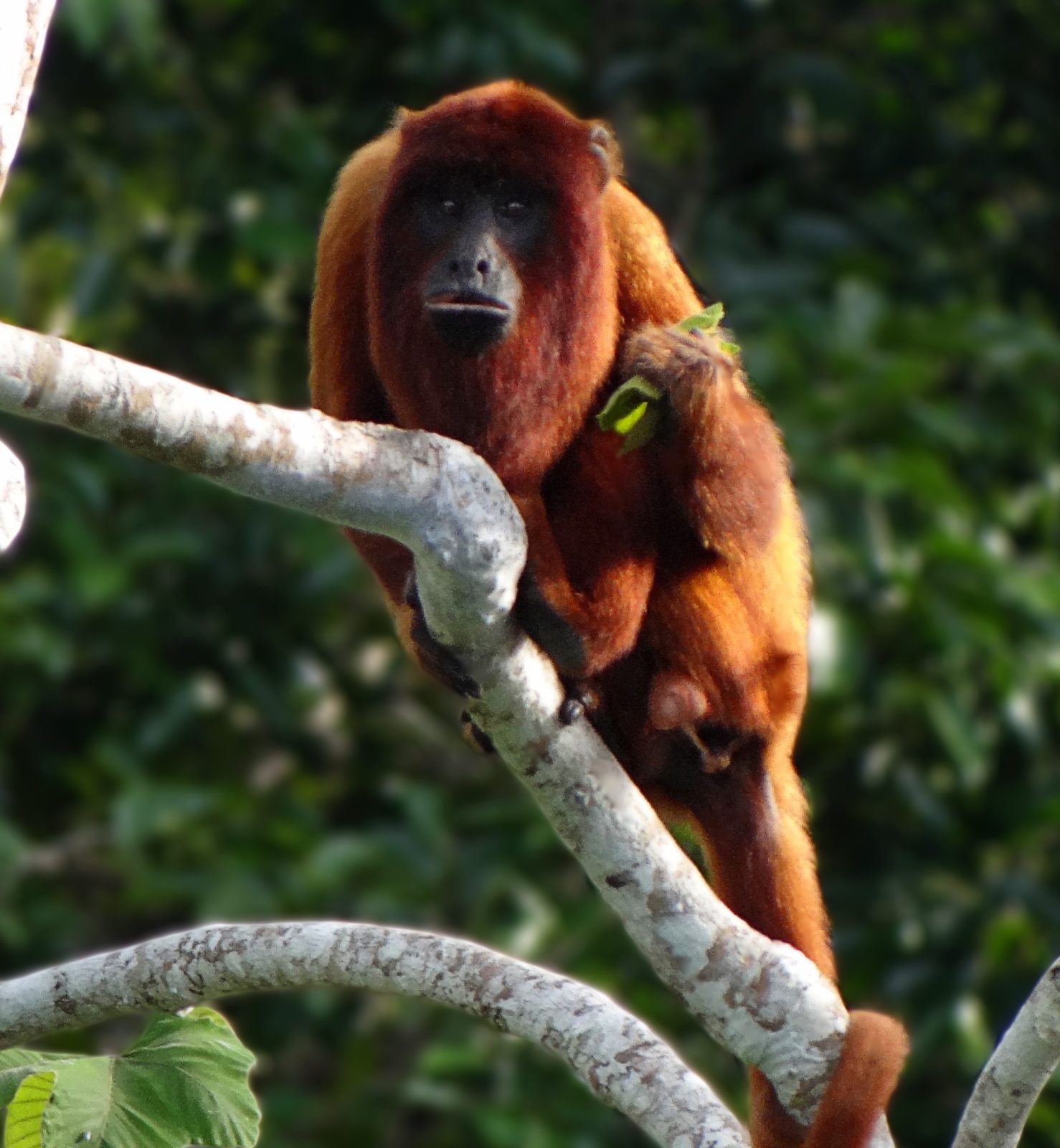
Bolivian red howler monkey
The Bolivian red howler (Alouatta sara) is a species of howler monkey, a type of New World monkey, 
endemic to Bolivia. It can be found in rain forests, including riverine and seasonally flooded forests. They are covered in red-orange hair. The red howler are found only in neotropical South America in places like Bolivia, Brazil, Colombia, Ecuador, French Guiana, Guyana, Perú, Suriname, Trinidad and Tobago, and Venezuela (map to the right). They extend from northwest Colombia east and south to the Amazon River in eastern Brazil. They can be largely found in tropical forests, as well as in riverine and seasonally swamped woodlands and in forests above 1000 meters (3280 feet) above sea level, humid and dry forest high terra firma. They stay in the high altitudes.
Female red howler pursues a male howler by showing her tongue, and moves onto another male, if no interest is shown. Mating occurs throughout the year. After six months, the female generally gives birth to one offspring (twins are very rare). Females usually first give birth when they reach five years, which is two years before males begin to mate. Newborns are born with fur and must hang onto their mother’s belly. When baby howlers reach one month they can now hang from their mothers with their tails and can eventually ride on her back when they reach one year.
Females are very fond of other females babies and will cuddle and play with them; this is particularly popular with females without their own current young. The male howlers, on the other hand, are very affectionate to youngsters but only to their own.
The red howlers live in groups with one to three males, and two to seven females (so up to 10 adults). Males live in bachelor groups, but are constantly attempting to gain control of the female group by fighting the lead male. The male red howler wakes up early in the morning and wakes the forest up with their loud howls that can be heard up to 2 miles, they also howl again at night, before they go to sleep, and the calls are answered by males from other red howler groups, to let them know their location, which means everyone knows where the territories lie, and so avoid physical clashes. Red howlers do not like rain, and will protest to the rain while hunched over in the trees. They stay high up in the trees away from jaguars and throw sticks and branches at them, as a troupe which can be quite a force against a single Jaguar. When a troop is invading, males come to take over the female group from the current male or males; they kill all the infants and mate with the females to produce their own offspring. The females try to protect their infants, but being smaller, they usually fail to do so. However, this means that females are not keen on take overs, so will on occasion help the males.
The Red Howler lifespan is 20 years, and as mentioned above, their main predators are Jaguars. They have about six species of red howler in Central and South America, and they sleep for 15 hours per day. They have the loudest call of any new world animal. They are proficient swimmers even though they spend most of their time in the tree. Baby howlers nurse for 18 to 24 months.